Aug 6, 2025 Coastal Walk Part 2
Today we tackled the longest south portion of the Kiama Coastal Walk. We took the train 8.5 miles south to the town of Gerringong (pronounced Jer-in-gong) where we found the END of the trail and walked north towards the beginning of the trail!
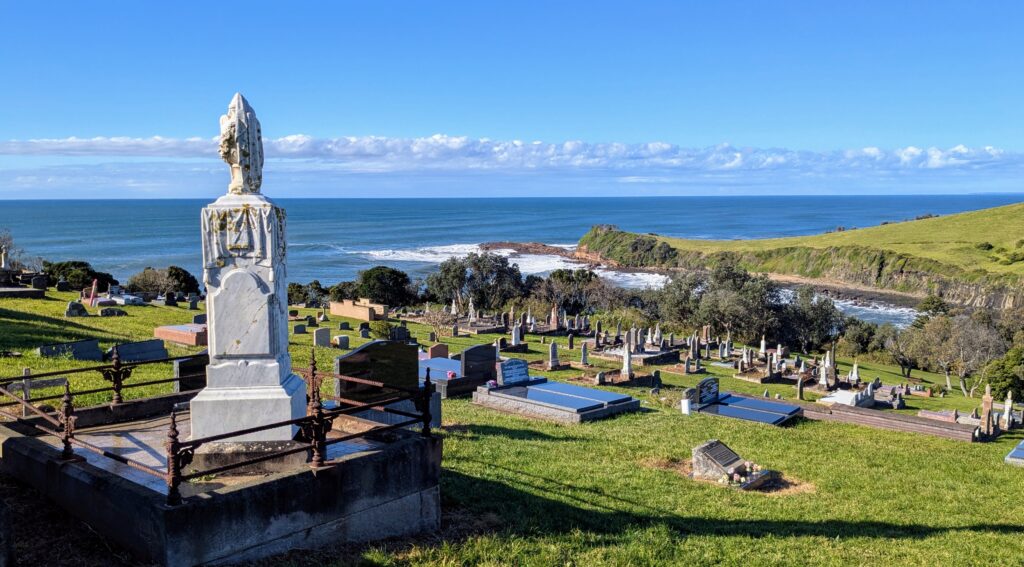
From the train station to the trail we had to walk through town and past the most picturesque cemetery with fabulous views!
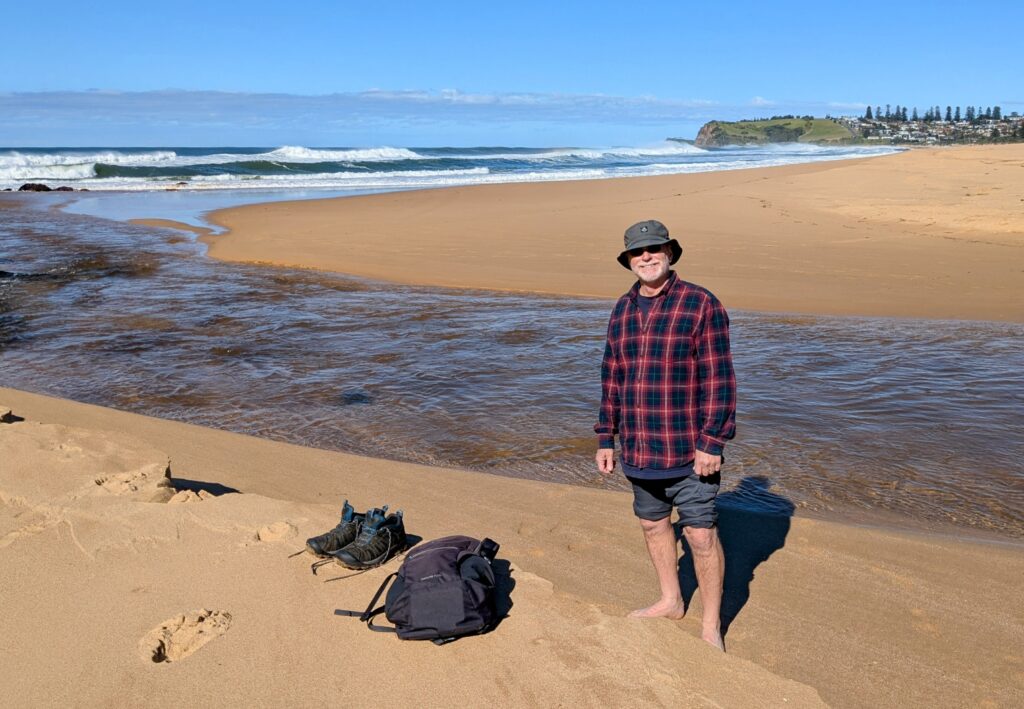
Then we discovered we had to wade through the inlet to a lagoon! Luckily the sandy bottom was firm and the cold water was only knee deep.

The views along the track were fantastic! Across the South Pacific Ocean, and inland across the pastures up to the Illawarra escarpmant. The Rainforest we visited yesterday once covered the whole area down to the seaside. Europeans who arrived here in the early 19th century removed the whole rainforest ecosystem in the span of a few decades!
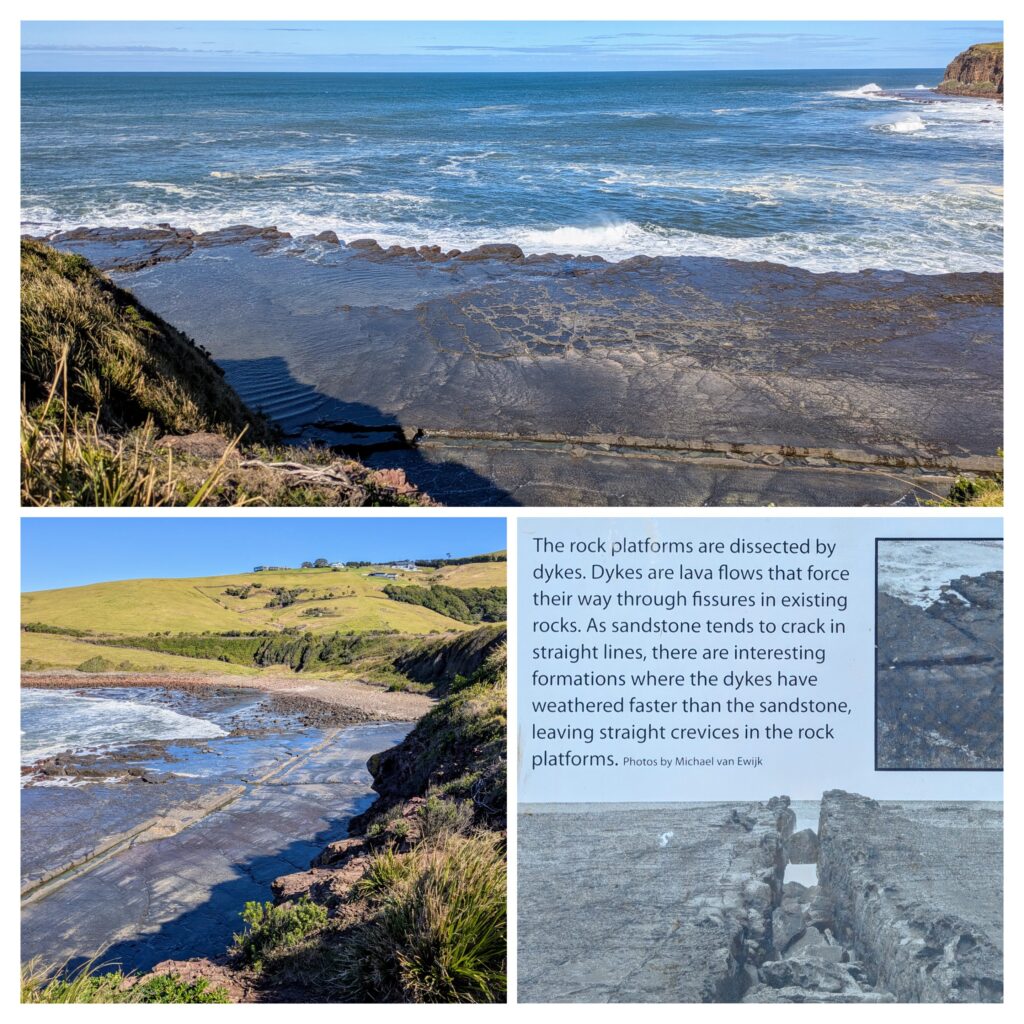
Fascinating geologic features were explained as well.
All in all it was an over 10 mile hike!
Aug 5, 2025 A Walk in the Rainforest
We navigated the bus system to ride inland, up onto the escarpment to visit the Minnamurra Rainforest. We had almost 6 hours to hike around and eat our picnic lunch before the return bus was scheduled.
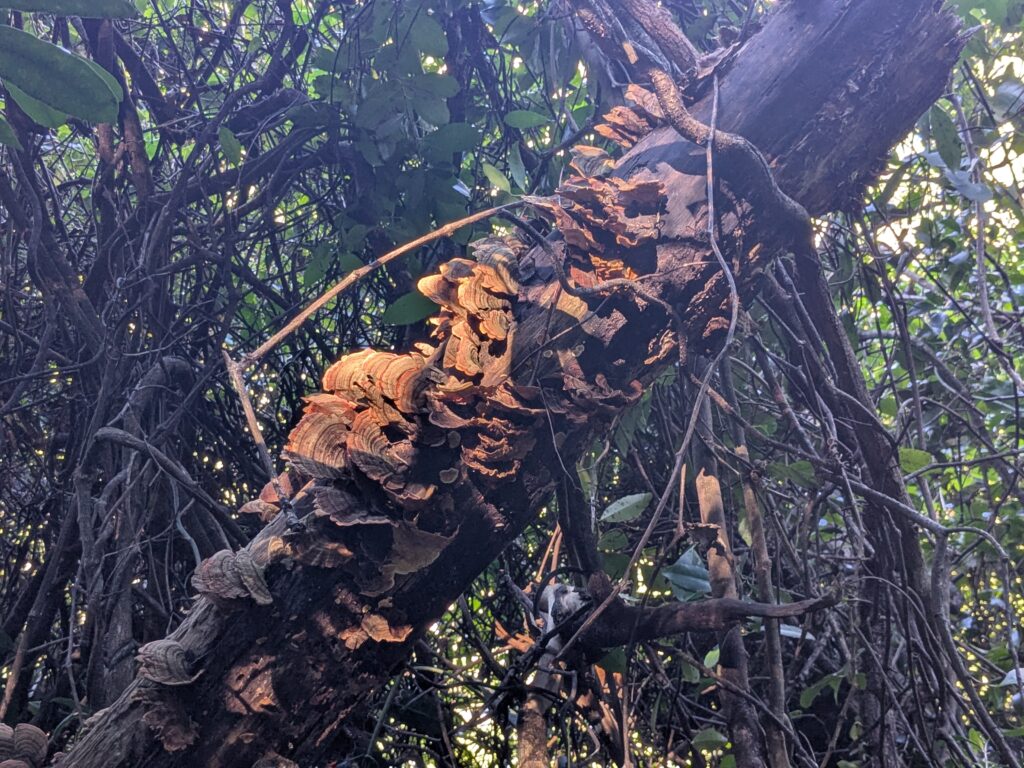
A true rainforest, with plenty of mushrooms to decompose the thick vegetation!

We took the steep hike up to Minnamurra Falls accompanied by the melodious songs of birds we never saw!
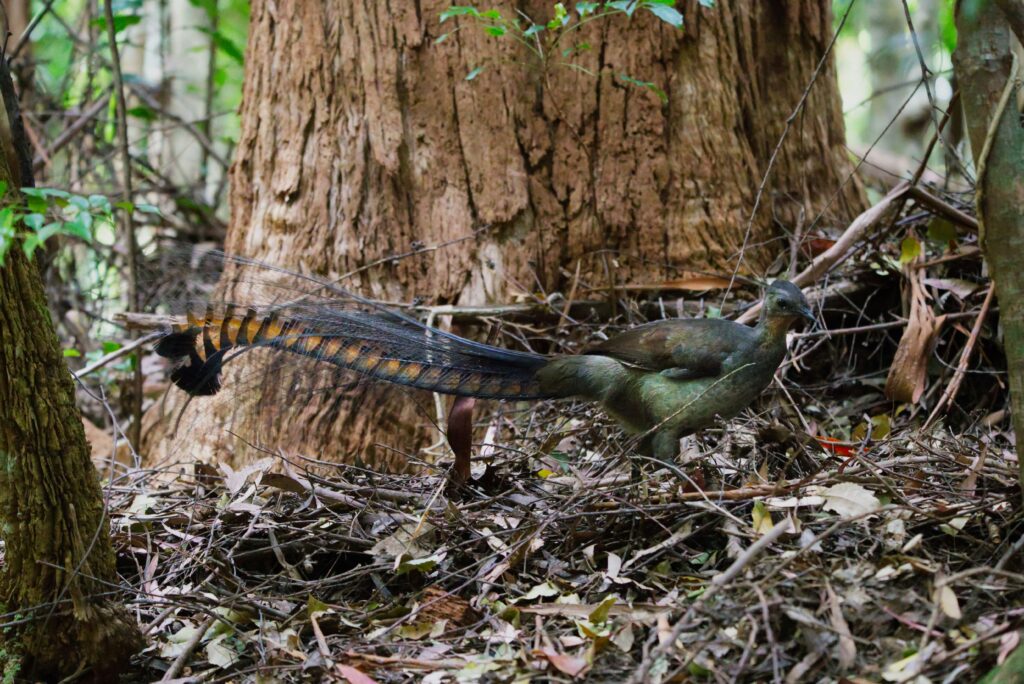
The one thing we didn’t see was the Superb Lyrebird who is known to inhabit this area.
For a video of the Lyrebird in full display, click HERE.
Aug 4, 2025 Kiama Coastal Walk
After one night in Sydney we took a bus and a train down the coast to the town of Kiama Downs where we stayed for 5 nights. We figured out the bus system to travel to the 3 parts of the Kiama Coastal Walk and tackled the north segment, the closest, which we could walk to, first.
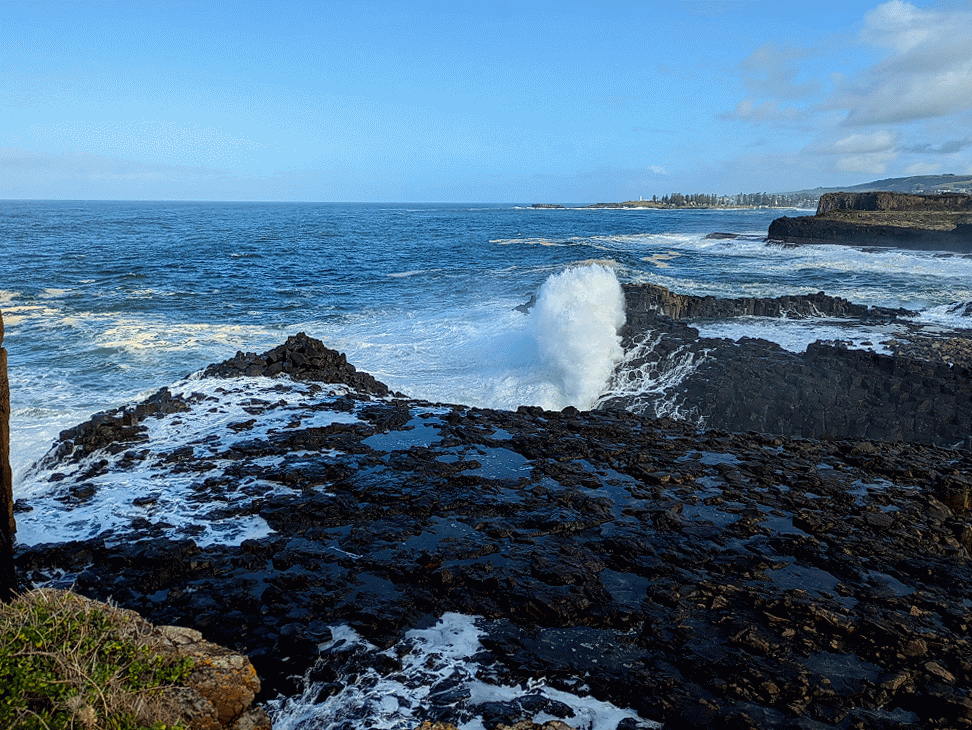
The sea was still rough from a weekend of stormy weather, during which we were traveling, avoiding the rain squalls for the most part!
Aug 1, 2025 A Day in Auckland

We enjoyed a sunny day in Auckland before our early morning flight to Sydney, Australia on Aug.2.

July 24 Museum Day
We took a loop drive to visit 2 museums today. We started at The Dargaville Museum in Dargaville, the epicenter of the once booming Kauri Gum business.
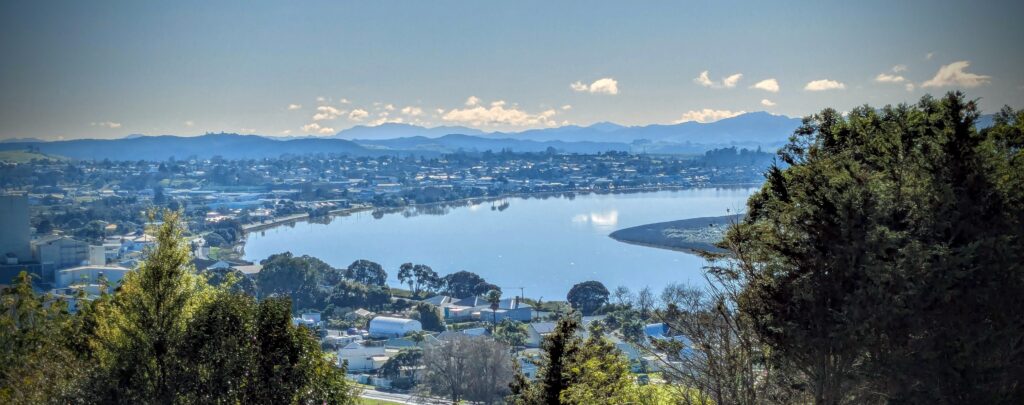
The museum is on a hill above the town of Dargaville, on the bend of the huge Wairoa river.
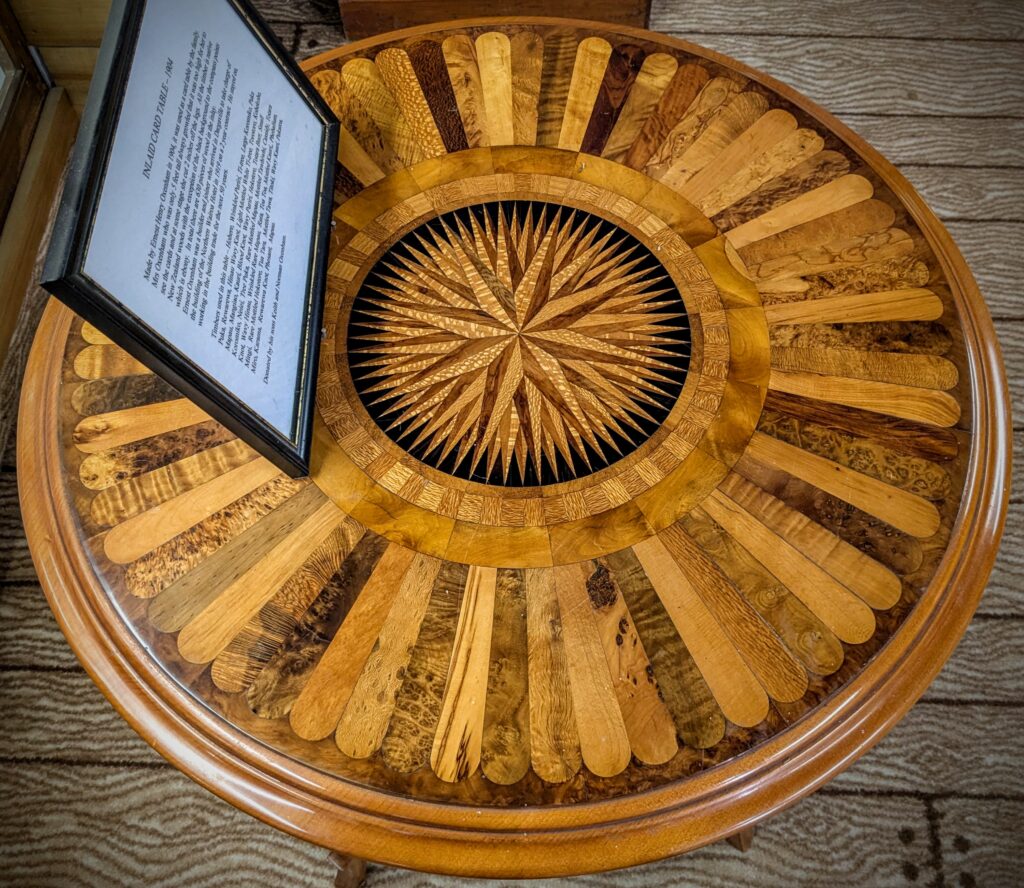
The museum is chock full of tons of artifacts from all walks of life in the area. This inlaid card table made of kauri wood is one of the many beautiful pieces of furniture on display.
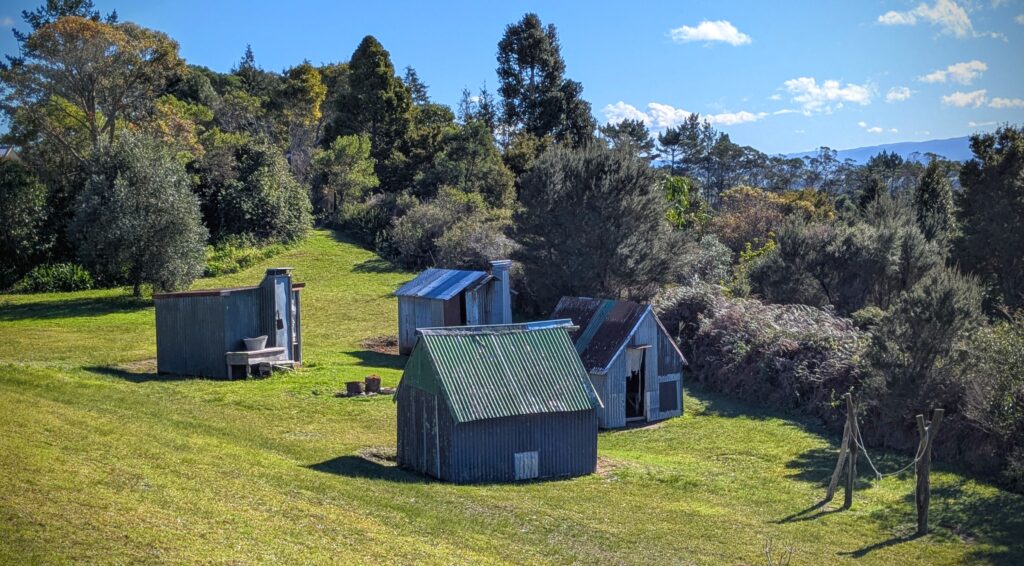
Outside there is a display of the shacks that immigrant labourers lived in while they worked the land, digging up kauri gum (clumps of hardened sap) from the vast kauri forests that once covered the land.
The second museum is The Kauri Museum, showcasing the kauri lumber industry that unfortunately cut itself out of business. The kauri tree grows so slowly it barely escaped extinction and only grows in small groves around the Northland now.
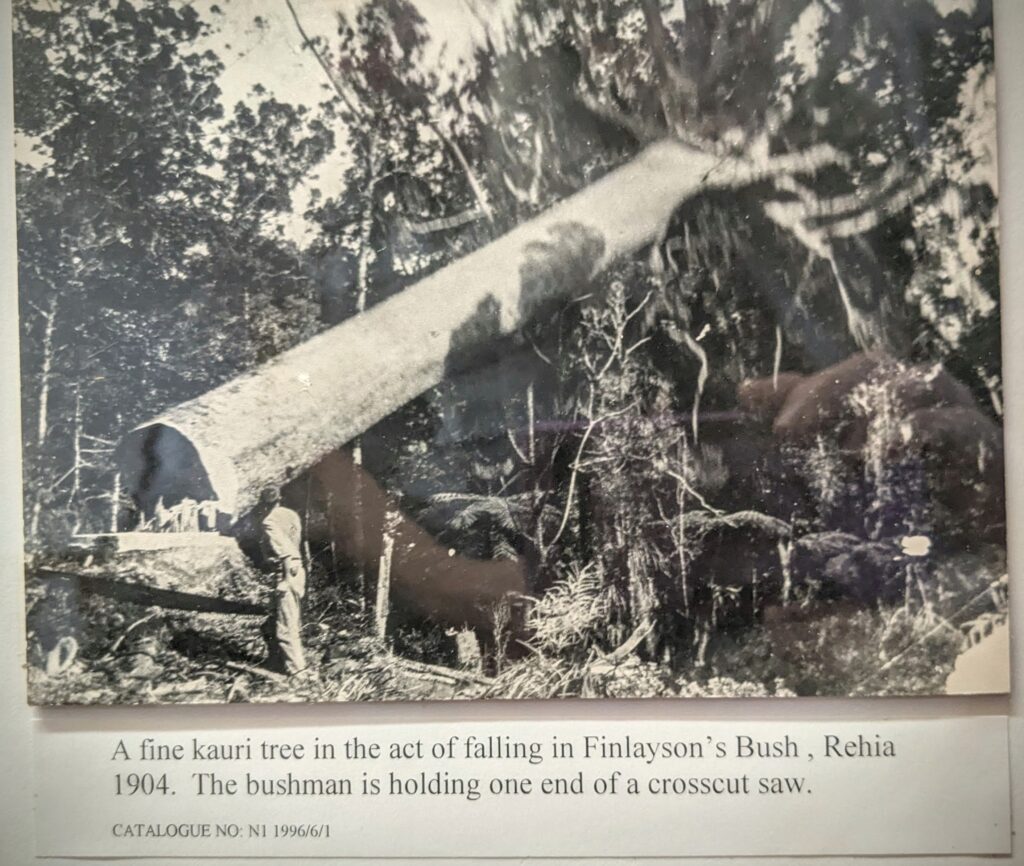
The ‘bushmen’ of NZ reminded me of the lumberjacks of Oregon and California that cut down the old growth Ponderosa and Redwoods.

A hollowed trunk shows how big the trees could get. This one would have been a teenager!
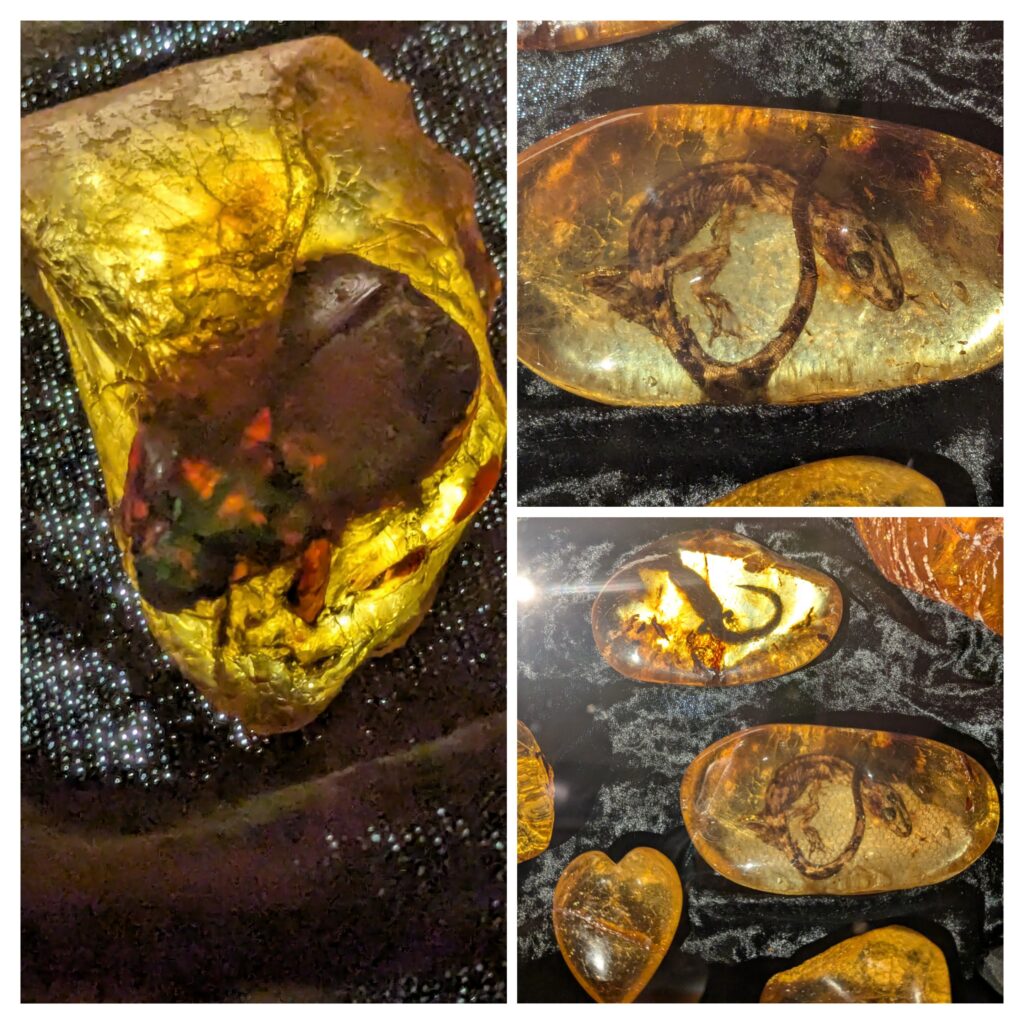
Collections of polished kauri gum are on display, including these, in which hapless animals were caught, probably thousands of years ago!
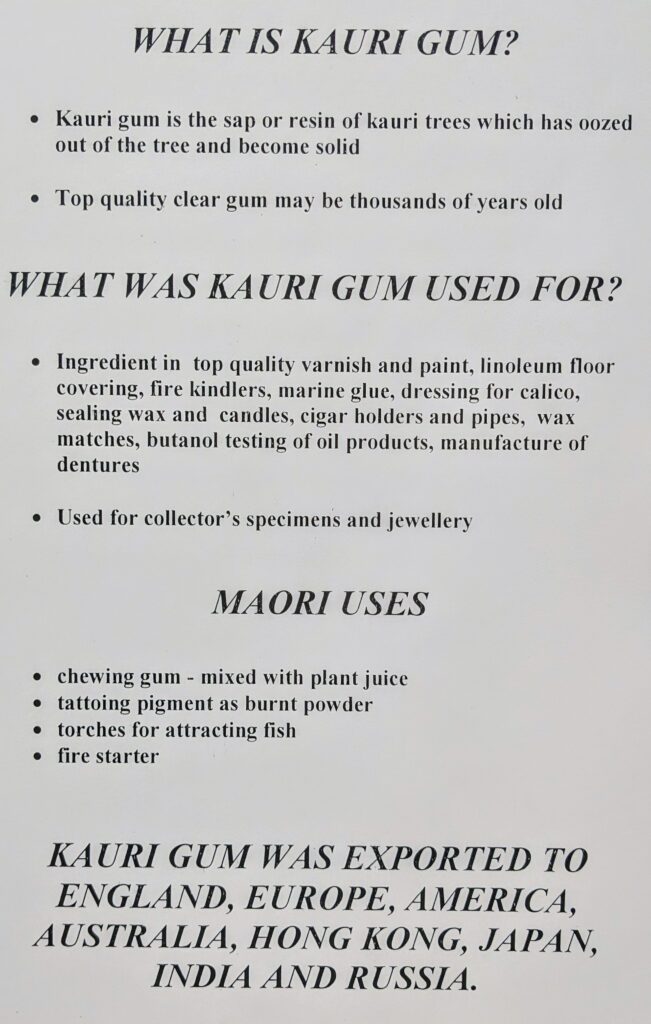
When we arrived back at Sam’s place, she had a delicious Roast Lamb and vegetable dinner for us!
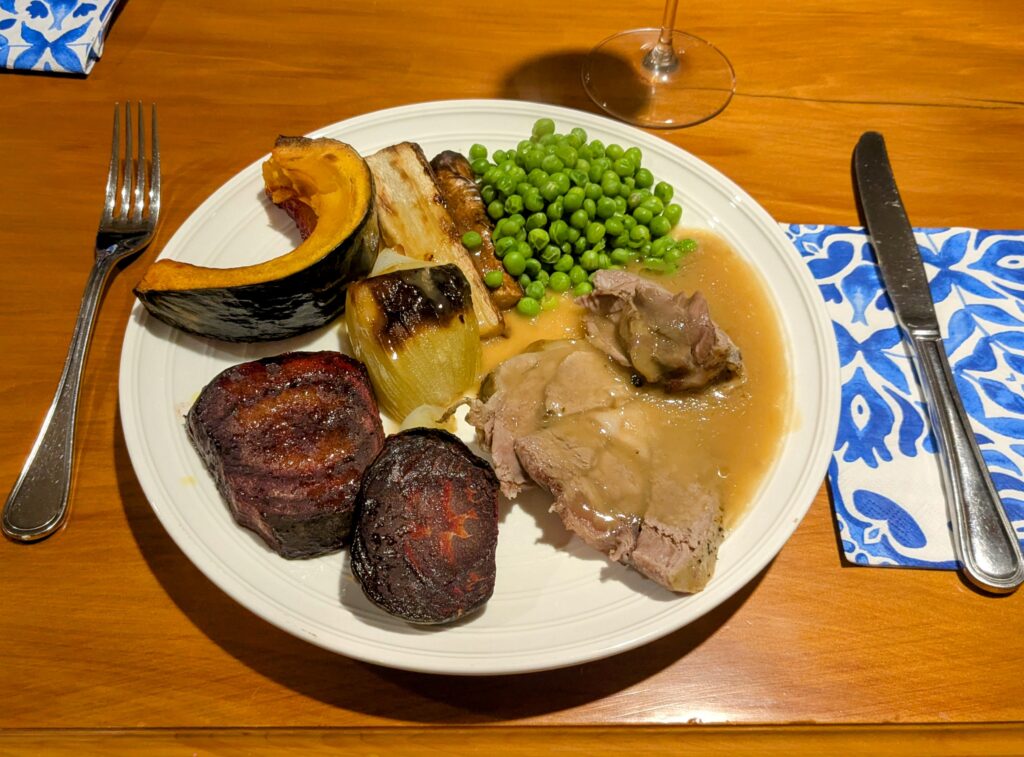
Yummy!!


















